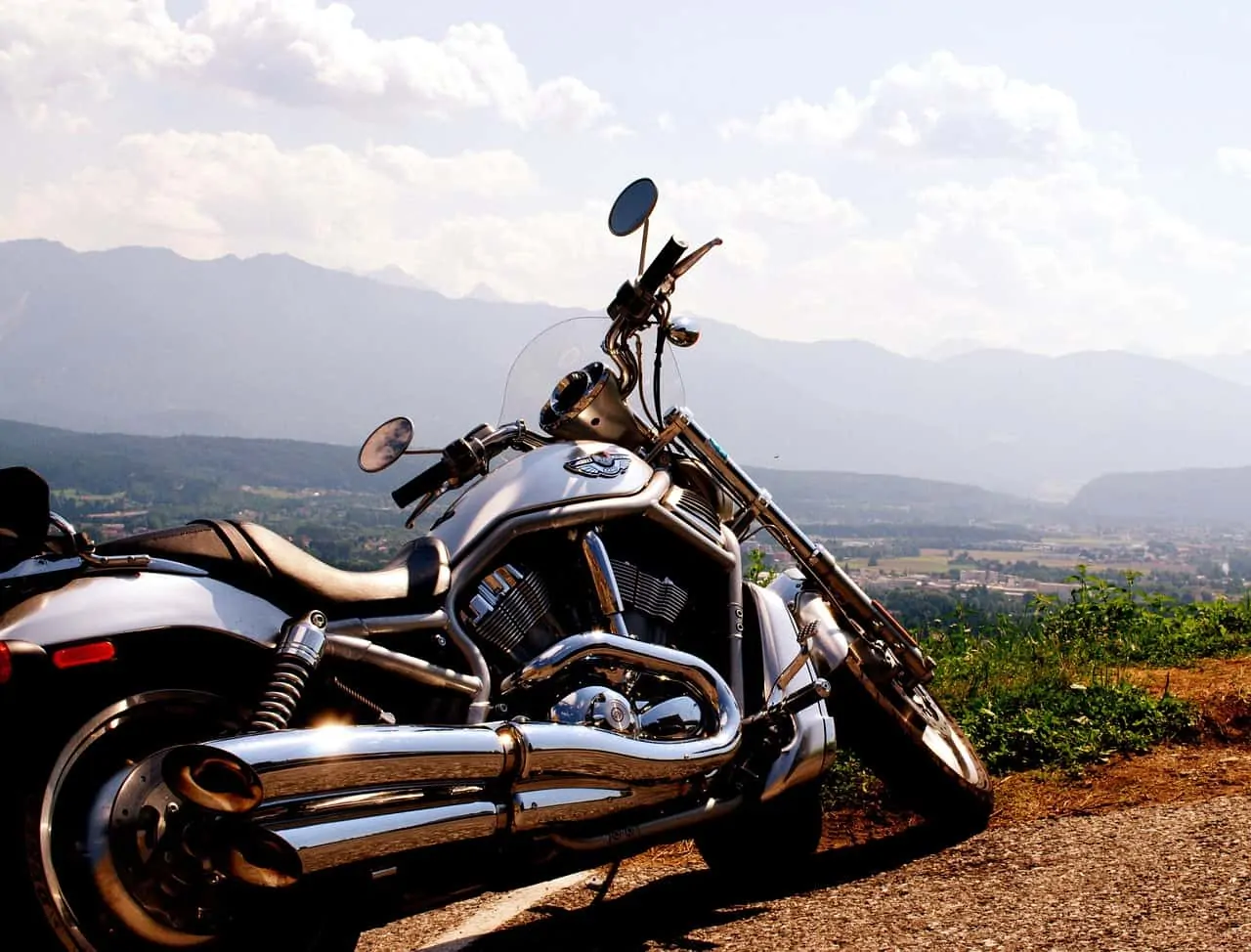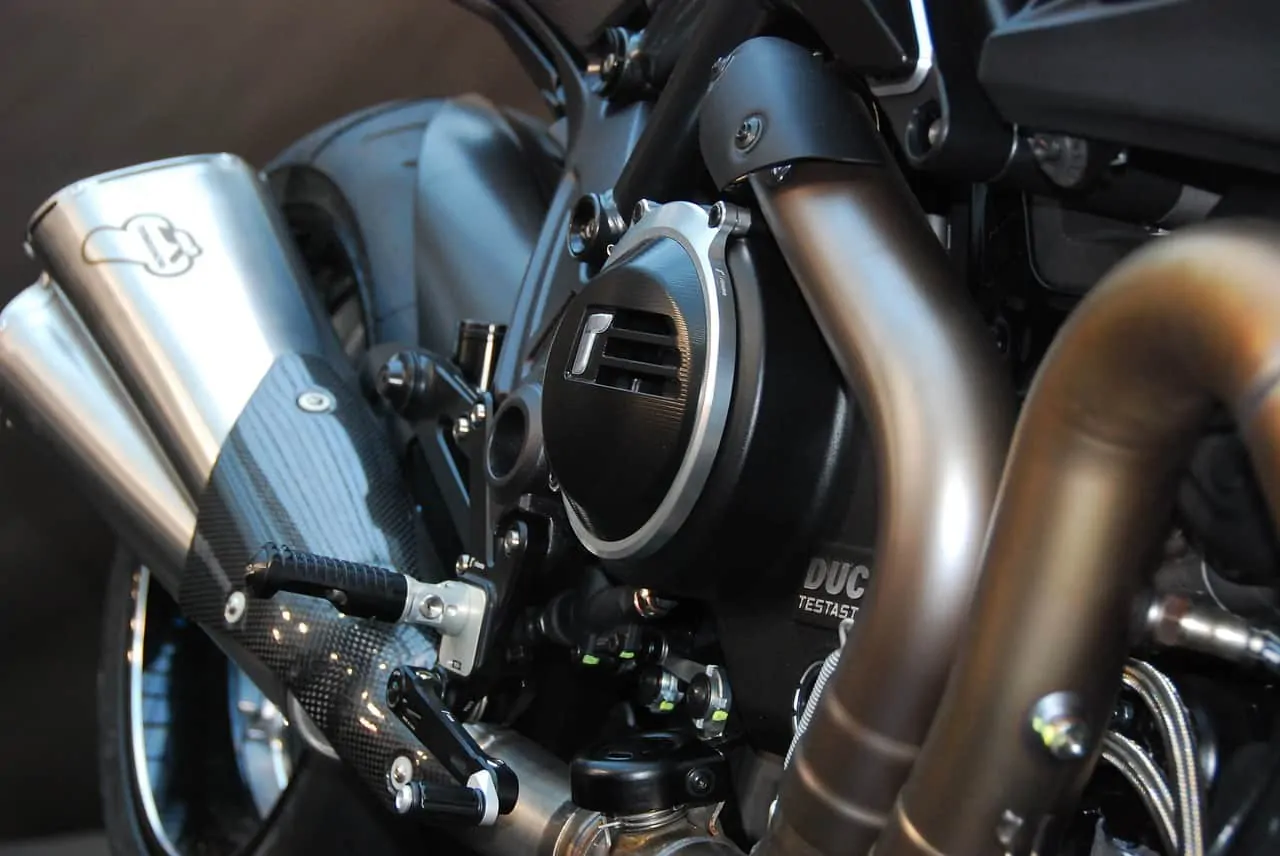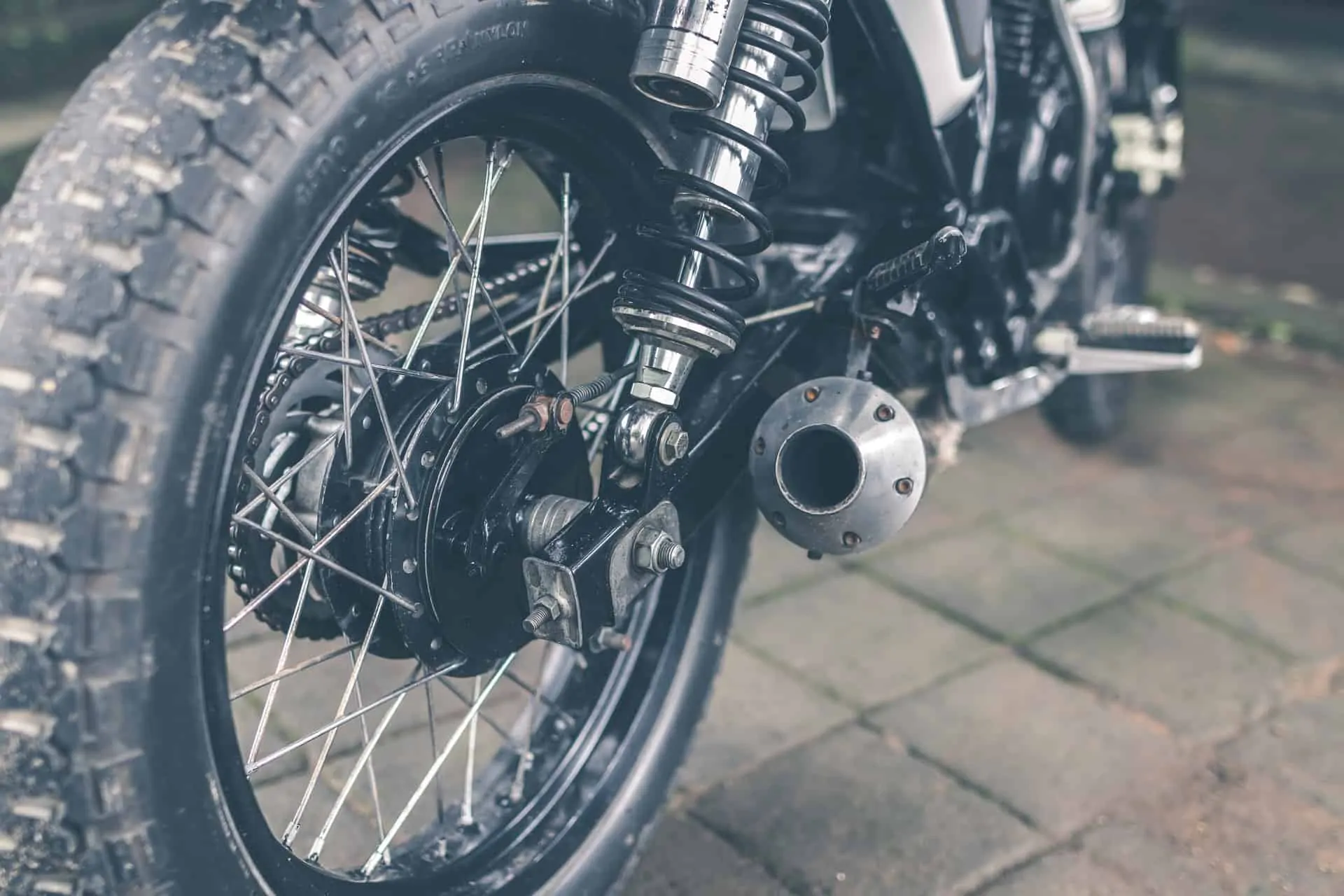Motorcycle exhaust pipes will inevitably get stained over time from the combination of heat, salt, water, and carbon buildup.
There are two main types of motorcycle exhaust pipes: stainless-steel and chrome. Stainless-steel pipes can be cleaned using mild acids. You need to be gentler with chrome pipes which are why the dirt is soaked first before being gently scrubbed with a softer metal and some cleaning agent. Both can be re-chromed and re-buffed to restore to its former shinier state.
Cleaning motorcycle exhaust pipes can be done at home. It should be a part of your motorcycle maintenance routine because clogged pipes can lead to backfiring, which is startling and dangerous.
How To Clean Stainless-Steel Pipes
Stainless-steel pipes are forgiving so you can be harsh in cleaning them. If they appear dull brown and feels rough to the touch, it is time for a deep-cleaning session.
Use An Acid
There are tons of mild acids that you can use to eliminate the discoloration. You can use toilet cleaners with nine percent hydrochloric acid content to address discoloration. You can use white vinegar, too. Just keep in mind that the milder the acid, the more soaking repetitions you need to do.
The first step is to clean out any dirt or clumps. Toilet cleaners cling to bogs and that might lead to clogs. You can soak them with wet rags before scrubbing them away with a steel scrub. Once the surface is clean and smooth, apply the acid. You may need to do this multiple times until the discolorations are completely gone.

To hasten the cleaning process, soak the pipe with the acid for a few hours. Throw in some agitators like nuts and bolts. Shake the pipe, rinse, and repeat. The agitators will scratch the inner surface and get rid of the discolorations.
Some toilet cleaners, especially the harsher variants, may permanently damage aluminum pipes. Begin with a gentle cleanser and do multiple soaks to avoid severe and permanent damage.
Completely rinse off any traces of acid once you’re done. If left inside the pipe, they could lead to the corrosion of the metal. Use a microfiber towel to completely wipe down the pipes. Microfiber towels are perfect because they are soft so they will not scratch the pipes. They are also extremely absorbent.
Polish The Metal
There are many metal polishers that you can use, I personally use a heavy metal polish restorer and protectant, you can find it on amazon – here . Pair this with a wire wool scrub to buff the metal surface. Make sure to use the scrub with the finest wool to minimize the damage. Scrub until the surface appears smooth and stain-free. It may take you a longer period of time if the acid you used caused a chemical peel.
Get Rid Of Burn Marks
Burn marks are caused by the extreme heat released from the combustion of air and fuel in the chambers. This can be remedied by using metal polish and a fine wire mesh scrub. More severe cases can be treated with oven cleaners. Be careful when using oven cleaners as the product can splash everywhere and damage your motorcycle.
Finishing Touches
Wipe off the excess products with a clean rag. You can add a finishing layer of heat resistant coating, like silicone coating so that your exhaust pipe will stay clean for a longer period of time. You can also spray a rust inhibitor, I use Rust Reformer Spray to prevent any future rust (you can grab it on amazon – here).

How To Clean Chrome Exhaust Pipes
Chrome is thin and easily malleable which is why one must be careful when cleaning it. It is recommended to not polish or scratch chrome as that will make the protective layer peel away.
Preparing The Chrome
Take some wet rags and soak the dirt and clumps on the chrome. The moisture will soften the goop and caked mud. Clean those away with the rag until the chrome is as clean as possible.
Removing Stains
The most recommended way to clean chrome is by using soap, water, and glass cleaner. Wipe down the surface with a sponge or some rags. This is an effective cleaning method for the usual carbon buildup stains and water stains. This also applies to anything that is burned into the pipes, like insects and bug guts.
For more stubborn clumps that really cling to the chrome, you can use other softening agents like carburetor cleaner, oven cleaner, and tar remover.
Not all chrome stains are removable. Stains colored blue and gold are trickier to remove. This unique stain is called “bluing” and can be remedied with an anti-blue agent. This usually happens when the chrome doesn’t have full-coverage heat shields.

Scrape It Clean
There could be stubborn buildup that you’ll have to scrape away. The best tool is a copper brush or any penny that was manufactured before 1982. That is because the penny is softer than chrome, with a Moh’s scale of hardness number of 3 compared to chromium which is 8.5. Gently scrape away any softened rubber or carbon buildup. Even if the metal is technically softer based on the scale, it still pays to do this gently.
Aftercare
Remove any traces of cleaning agents and moisture. Thoroughly dry the pipes with a towel. A microfiber towel works best because it is gentle and greatly absorbent.
Next, apply some automotive wax to really make the chrome shine and appear clean. Buff off the excess until completely dry. This will block excess moisture so that your pipe will stay clean and lessen the chances of damaging the plating.
There are a few extra steps that you can do if you really want to restore the chrome to its former bright and lustrous version. You can re-chrome the pipes but there might be issues with blending.
If there are exposed metallic parts that are too rusty, you can remove the rust through mild acids like white vinegar and scrubbed with agitators like copper or steel wool. Some prefer cutting out the rusted parts entirely if they are too weak to be useful.
For the final touch, you can spray down the pipes with some heat shield so that your handiwork will last longer. It also helps to clean consistently to prevent the buildup of dirt in the pipes. I use Metalcast Anodized spray for this (amazon link – here).
Final Notes
Most of the cleaning agents for cleaning the pipes, like toilet cleaners and tar removers, are made of very harsh chemicals that can cause respiratory issues in the long run. It is advisable to work in a well-ventilated area while wearing the correct protective gear. These ingredients are also corrosive so wear gloves and avoid letting them drip unto your shoes or exposed skin.
